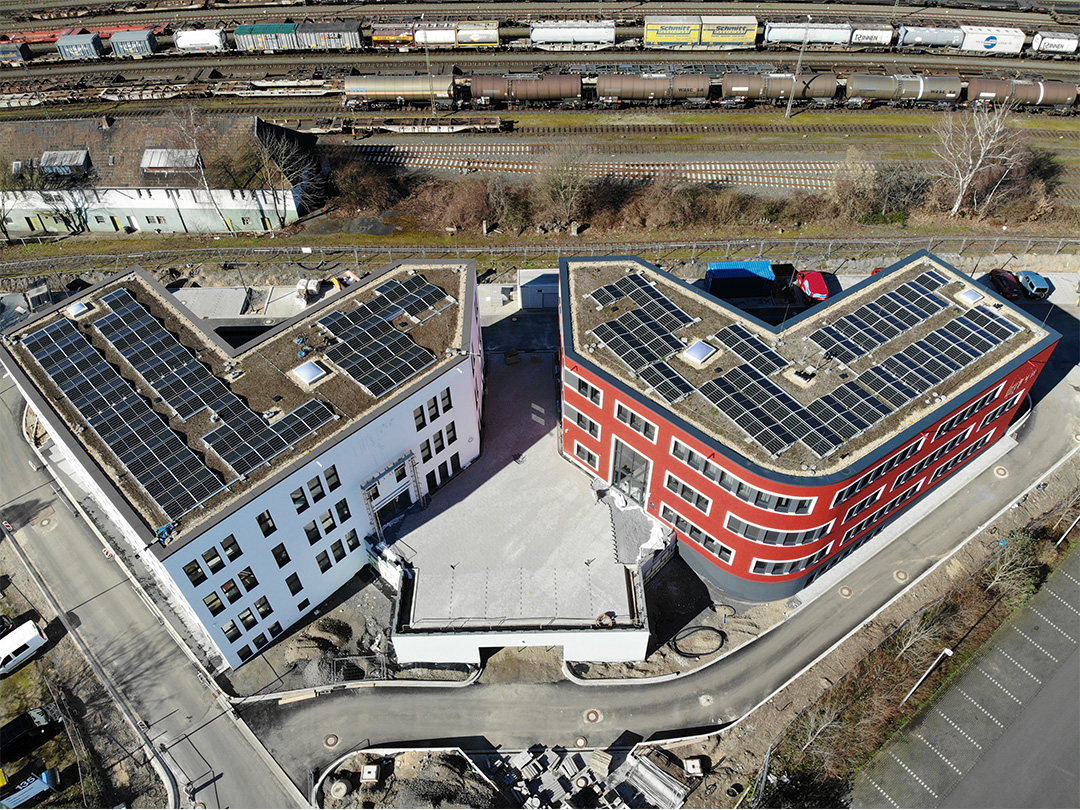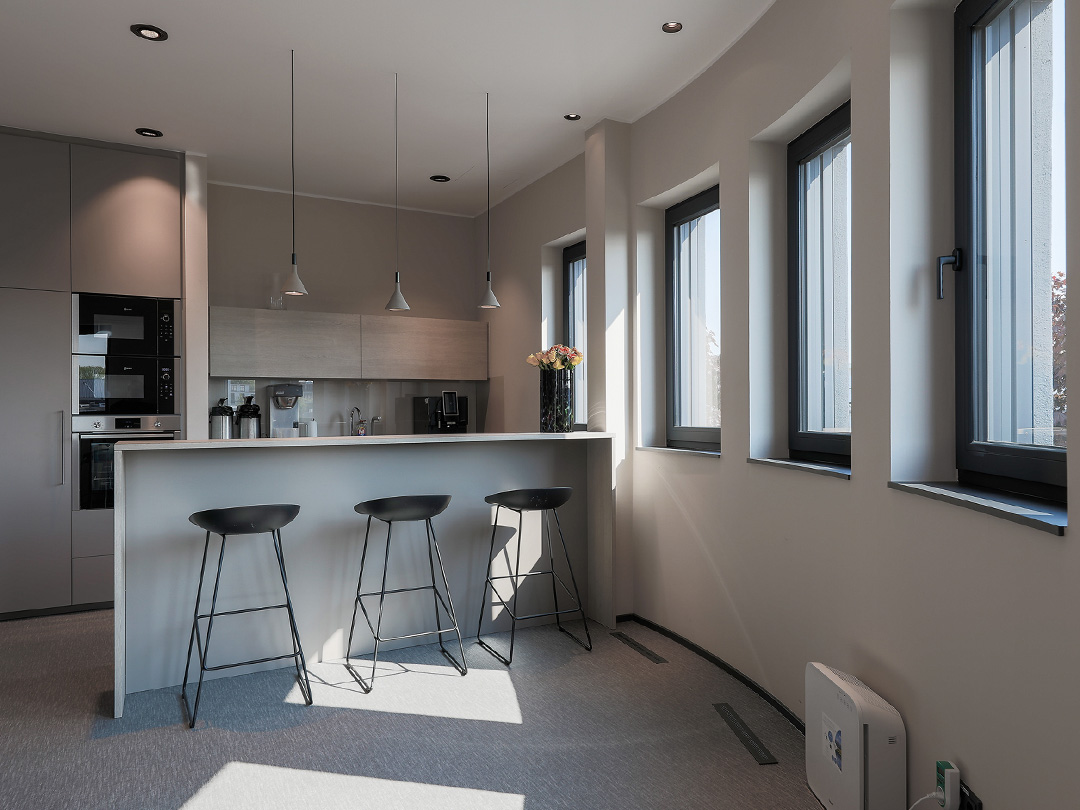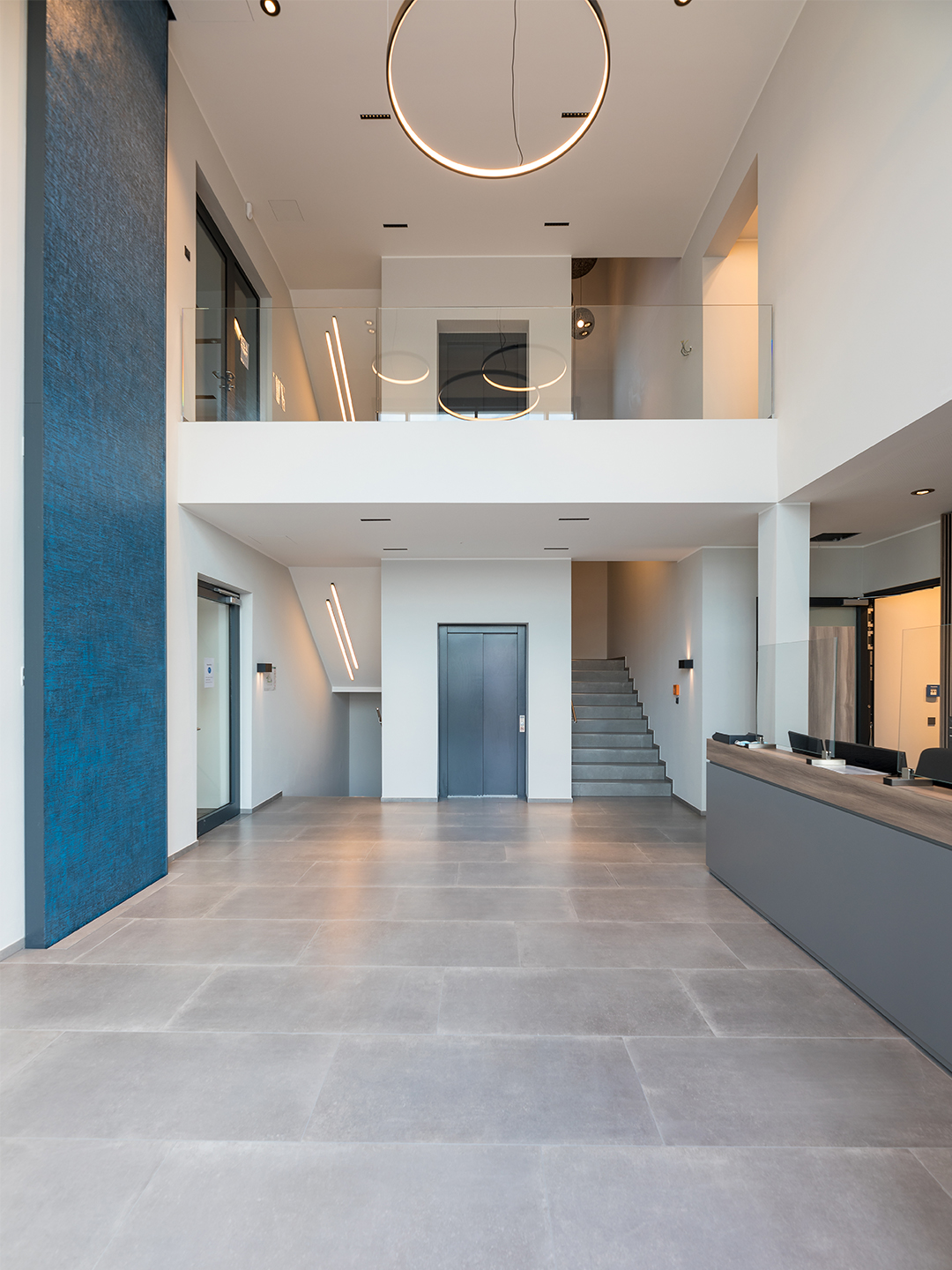Hinz and Holthausen office building
Good neighborhood in Cologne Zollstock
The new company headquarters of the Cologne-based family businesses Helmut Hinz GmbH & Co. and Holthausen GmbH have a number of similarities, but are completely independent – just like the two sanitary and heating specialist companies, which each serve different target groups. While Helmut Hinz GmbH & Co. focuses on private customers, Holthausen GmbH looks after larger properties with ten or more residential units. However, they feel closely connected in their corporate philosophy and are looking forward to their new neighborhood.

Günter Hinz and Bastian Winter, respectively managing directors of Helmut Hinz GmbH & Co. and Holthausen GmbH, have known and appreciated each other for a long time. When both entrepreneurs were considering the idea of a sustainable new building due to a lack of space at their respective company locations, the idea of two neighboring buildings was quickly born. Previously located in Sülz, a suitable property was found just a few meters away in Zollstock. After a construction period of around one and a half years, the two three-storey office buildings, each with around 1,800 square meters of office, exhibition and storage space, were completed in 2022. The design of the buildings is based on the respective corporate design of the companies: The Hinz building picks up on the striking Hinz red with the blue wave, while the Holthausen building comes in classic white with green and red accents in line with the company logo.
Future-oriented planning and modern environmental technology
In terms of building technology, the planning was forward-looking and environmentally friendly: Both buildings comply with the KfW 55 standard. Most of the power is supplied by a photovoltaic system, which also feeds the e-charging stations. A battery storage system makes solar energy available even when there is little sunshine. “We want to be as energy self-sufficient as possible. This is also relevant for us in terms of sustainability,” explains Günter Hinz. Renewable energies are also used for the air conditioning of the buildings: reversible heat pumps extract heat from the ambient air or extract the heat from the interior spaces to cool them. The ClimaLevel Multiboden distributes the heat and cold, which also takes care of ventilation in addition to heating and cooling. “We have been working with ClimaLevel Energiesysteme GmbH for years in the field of conventional underfloor heating,” explains Bastian Winter. “We opted for the innovative ClimaLevel Multiboden for our buildings. The slim and very energy-efficient system convinced us.” Another advantage: the entire underfloor cabling can be integrated into the ClimaLevel multi-floor.



Photo @flash.iFFect

Photo @OO Baukunst
Planning goal comfort
The indoor climate in offices influences the well-being and performance of the people working there. Controlled air renewal is necessary for hygienic indoor air quality. Furthermore, the operative room temperature in the occupied zone should not exceed 26°C at high outside temperatures. As water has four times the specific heat capacity of air, a water-based system is clearly preferable for dissipating thermal loads. With this approach, the ventilation system is designed purely for the desired fresh air volume flow. The air flow must be planned in such a way that a maximum average air velocity of 0.24 m/s is not exceeded in the occupied zone. The ideal solution for these planning parameters is the ClimaLevel Multiboden. The combination of hot water underfloor heating with an air-conducting hollow floor and floor-integrated air outlets ensures a very efficient increase in surface cooling performance when cooling. The air outlets of the ClimaLevelMultiboden are designed in such a way that no turbulent air flow occurs in the occupied zone. The system optimizes the interaction between the thermally activated screed and a fast-acting ventilation system. In summer, the air flow close to the floor ensures a significant increase in performance compared to pure surface systems without ventilation components. The system temperatures are 35°/32° in winter and 16°/19° in summer. In order to achieve the desired cooling capacity of > 60W/m2, the supply air is dehumidified in the central ventilation system. The employees in the “fraternal twins”, as Hinz and Winter like to call their new buildings, definitely had an ideal working environment on the hot summer days of 2022.
